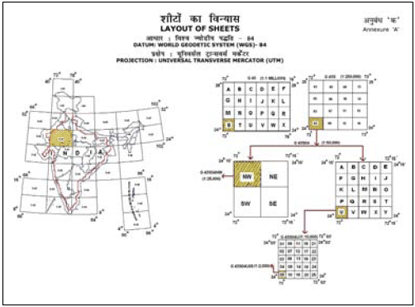
With the launch of GPS in the 1980s, the task of providing control points for mapping purposes was greatly simplified, leading to economy and ease of operation. The technique of LASER mapping, which existed decades before GPS, also received a boost due to GPS, as instantaneous precise positioning of the exposure station during the mobile LASER mapping operation was made possible by GPS, thus solving a major problem in LASER mapping…

Navigate with Garmin StreetPilot 2820
Garmin International Inchas announced the StreetPilot 2820, a premium automotive and motorcycle navigation device for customers, as well as a configurable platform for Garmin’s growing list of OEM partners. The StreetPilot 2820 builds upon the success of the StreetPilot 2700 series, and also incorporates Bluetooth wireless connectivity and a hands-free calling interface.
www.garmin.com

he Japanese Quasi-Zenith Satellite System (QZSS) represents an innovative multi-service satellite system able to provide positioning for mobile users over Eastern Asia and Australasia. The integration of the QZSS with the present GPS and the European GALILEO will improve accuracy, availability and capability over a wide area. Throughout a collaborative research program, the space technology group of AIST, Japan and the University of NSW…

RT-5SW new long-range laser
A new long-range, dual-slope laser ideally suited for large job sites and agricultural land-leveling has been announced by Topcon Positioning Systems. The RT-5SW retains all of the primary benefits of the RT-5S series including five-arc-second accuracy – less than 1/32nd of an inch per 100 feet. It also features an integrated radio remote controller capable of two-way communication up to 1,000 feet. Radio communications between the remote and the base laser allows the operator to verify adjustments right from the cab of a machine. www.topconpositioning.com

he Central Government announced the National Map Policy (NMP) on 19th May 2005. The NMP document authorizes Survey of India (SOI) to issue detailed guidelines on the implementation of the NMP. These guidelines are issued in the light of the above cited authorization. The guidelines are clarificatory in nature and does not create any new rights nor abridge any existing rights which are enforceable in courts of law…

Indonesian military plane to map quake-hit areas
The Indonesian Defence Forces (TNI) have assigned a CN-235 airplane to carry out aerial photography on areas in the Yogyakarta region affected by 27 May 5.9-magnitude earthquake. The activity is aimed at making a detailed map of areas devastated by the quake.
TNI had also sent a Hercules C-130 plane carrying a TNI field medical team and three helicopters to evacuate victims. http://news.xinhuanet.com
june 2006
International Conference in GIS and Health
27-29 June, Hong Kong
chankw1@hkuoc.hk
http;//geog.hku.hk/HealthGIS2006
July 2006
ISPRS …

div class=”meta”>DATO’ HAMID ALI, AHMAD FAUZI NORDIN, DR SAMAD HJ ABU CHANG LENG HUA
The Department of Survey and Mapping Malaysia (JUPEM) is the competent authority in providing both horizontal and vertical survey control to the surveying community in Malaysia. This is carried out through the setting up of a surveying infrastructure throughout the country for the eventual purpose of national development, security and defence. In line with the government’s endeavour to improve its delivery mechanism, there have…

George Everest entered the Bengal Artillery as a Lieutenant on 4 April 1806 before he had even reached his 16th birthday. This rapid promotion was due to the number of vacancies at that time. Little has come to light about the first few years of his service in India until the siege of Kalinjar near Allahabad in 1812…










 (5.00 out of 5)
(5.00 out of 5)